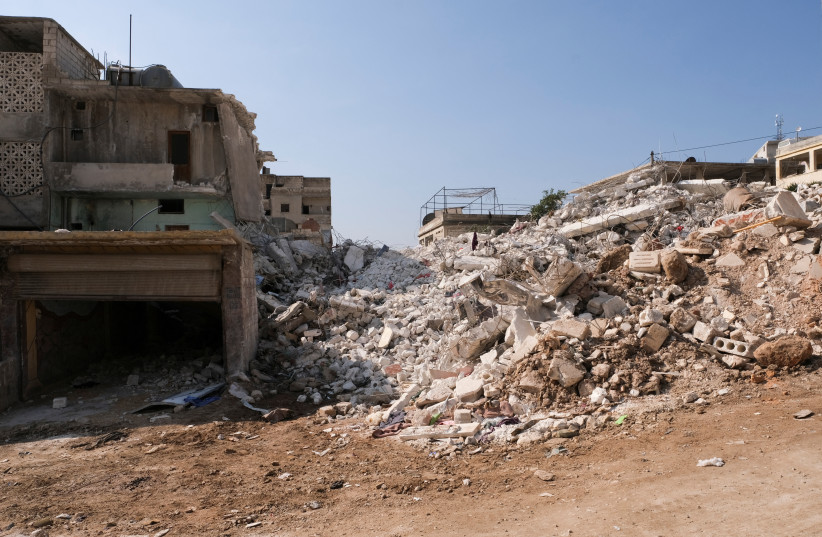The earthquake that took place in Turkey and Syria last month has killed at least 10,000 Syrians in both countries, including refugees, in areas in Idlib, Afrin and Aleppo. A new report now shows how dire the funding situation is for survivors.
“Syrians are grappling with rising displacement and severe trauma one month after the earthquake while funding that has been released to support the aid response remains alarmingly slow,” the Norwegian Refugee Council (NRC) warned Monday.
“Syrians are grappling with rising displacement and severe trauma one month after the earthquake while funding that has been released to support the aid response remains alarmingly slow.”
Norwegian Refugee Council
In the early days after the earthquake, the lone crossing to Syria from Turkey, Bab al-Hawa, was closed due to damage.
Today, Syrians on both sides of the border continue to suffer.
A report on Sunday in Turkish state media said that around 10% of those reported dead in Turkey were Syrians, most of them refugees. In Syria, the death toll is estimated at about 6,000, but it may be higher because of conflicted overlapping reports from regime-controlled and opposition-controlled areas.
The NRC report adds some important context. “NRC’s field teams and other agencies have reported a constant rise in displacement as Syrians remain in collective shelters and on the streets. Trauma from multiple earthquakes and aftershocks has had a detrimental impact on children’s emotional well-being across affected areas in the country,” a statement from the organization reads.
“My colleagues in Syria describe a worsening humanitarian crisis on the back of a natural disaster. Some people have to survive on a bag of bread and tinned food, which is all they have received this past month. Displacement continues to rise as people take refuge in collective shelters,” said Carsten Hansen, NRC’s Middle East regional director. “The world can’t stand by and watch Syrians go hungry, cold and displaced in circumstances like this after enduring 12 years of crisis.”
According to the report, less than half of the $400 million needed for Syria has been provided by donors. This comes as Yemen continues to be in dire need of funding, after more than a decade of wars in Syria, Yemen, Libya and other places in the Middle East.
It also comes amid increasing concern about rising extremism in parts of the Sahel in Africa. “As of March 1, less than half of the nearly $400 million that the UN says are needed for Syria has been provided by donors. Funding to NGO first responders has continued to be slow and inadequate. The UN humanitarian fund for the pre-earthquake crisis has also been underfunded, threatening a rise in humanitarian needs. Without further resources, Syria will be unable to recover from these multiple crises. The EU and Sweden have announced a donor conference to help earthquake-hit populations on March 16,” the NRC report reads.
“The actions of the international community will be put to the test as donors meet to announce their funding support to Syria at the EU-hosted donor conference. This is the moment when donors must turn a corner and provide aid to people waiting in desperation. Show solidarity and provide the financial support without delay,” said Hansen.
Reports from Syria provided by the NRC said that people are in dire conditions in tents and the statement from NRC describes one site with nine families living in one room, fully 45 people in the same place. “We sleep in shifts, those who work in the morning, sleep at night and when they leave to work others sleep. I get only three hours of sleep per day. We do everything in shifts here, sleeping, eating, going to the bathroom,” said the survivor to NRC.
The NRC is providing help in Aleppo, Lattakia, Homa, Hama and Idlib areas of Syria. The report says that “NRC has teams across Syrian territories. In the first month following the devastating earthquake, NRC assisted over 60,000 people with winter items, water supply, psychosocial support, hygiene kits, cash support among other forms of assistance. The needs, however, continue to grow amid a deepening economic crisis.”
According to the report, the UN has said that 8.8 million people have been affected in Syria, thousands of buildings damaged and also 105,000 people displaced. This comes after millions of Syrians were already displaced and hundreds of thousands killed in war.
“Based on NRC’s initial rapid assessment conducted in 31 collective shelters in Aleppo, 45% of the collective shelter managers reported that most or some of the residents had lost their Identity Documents,” the report said.

